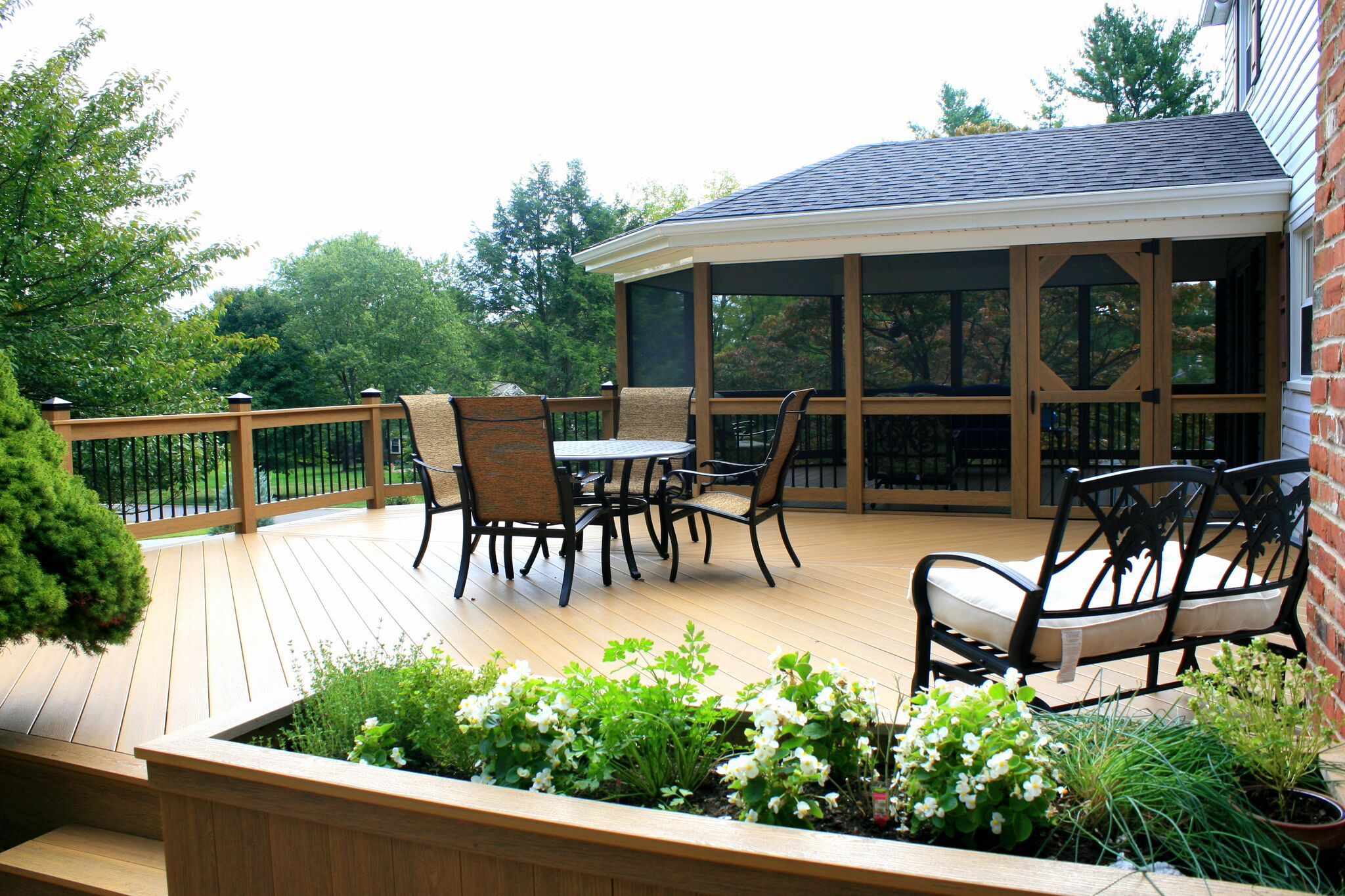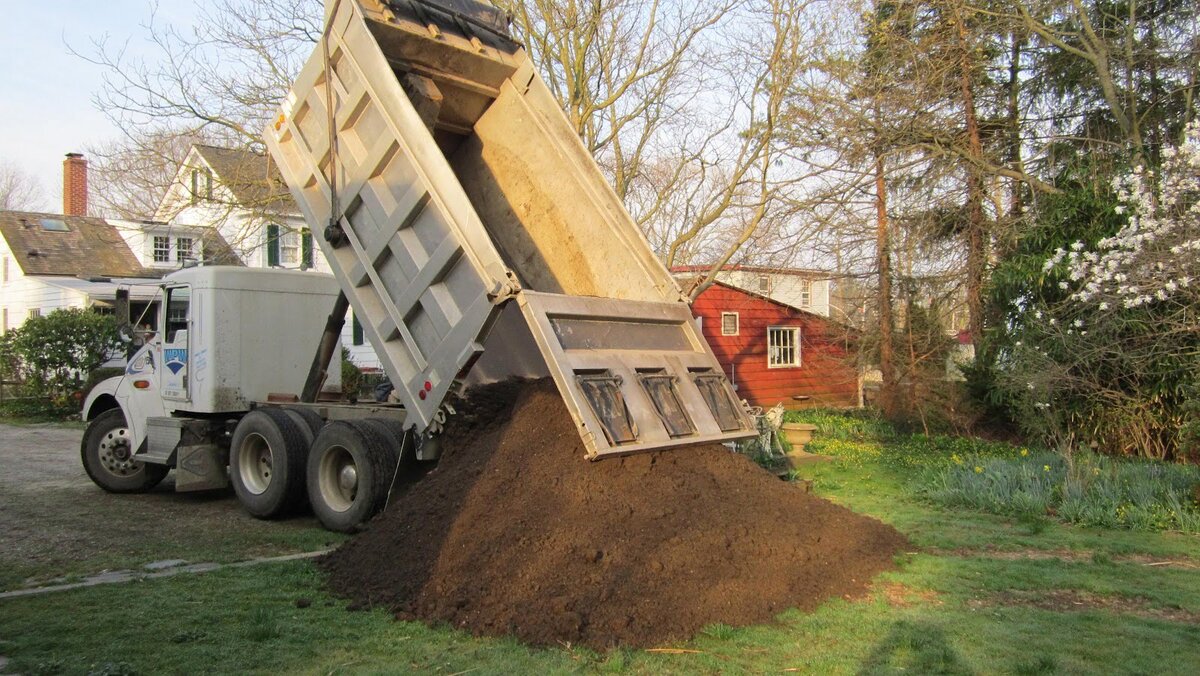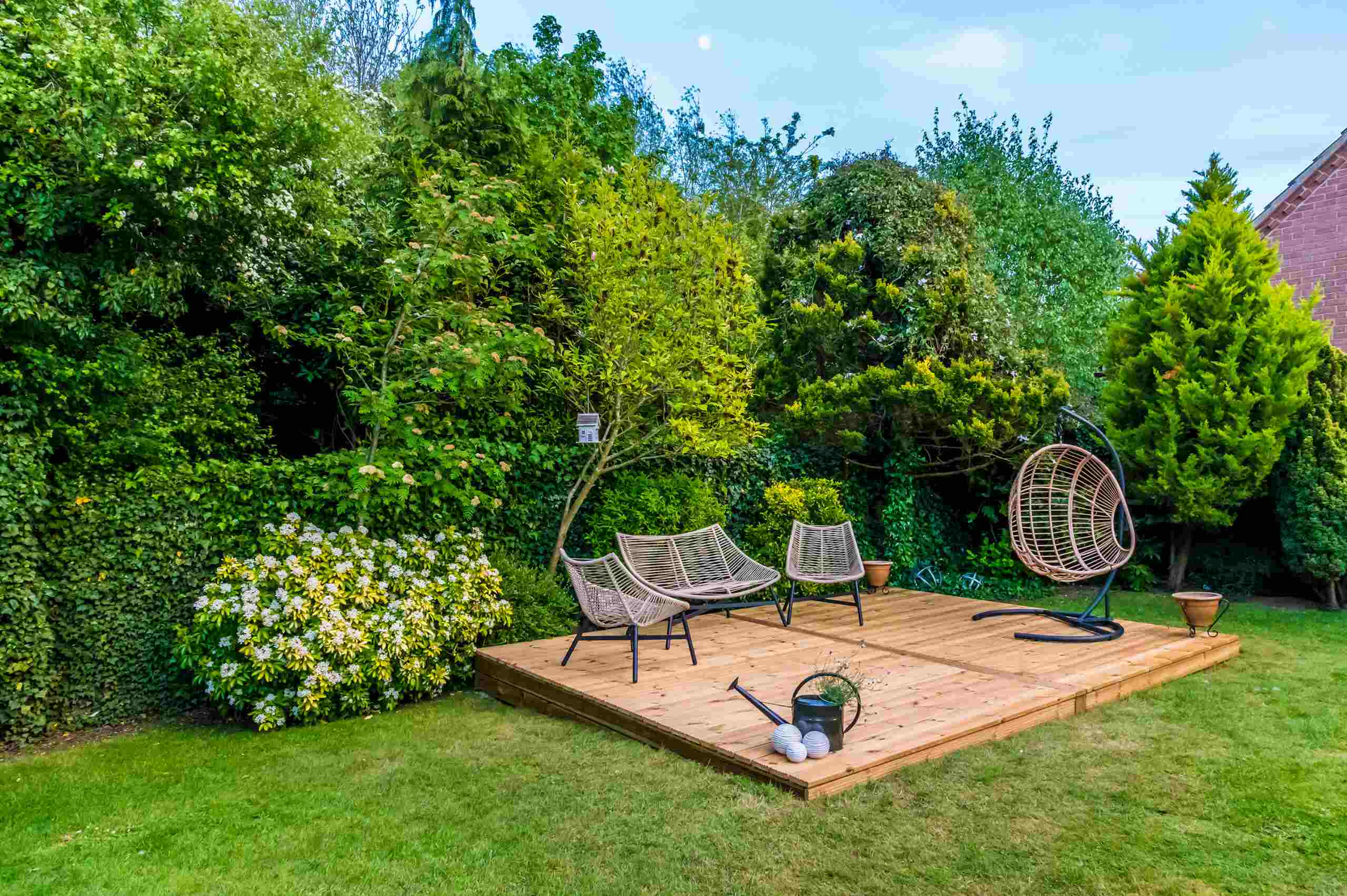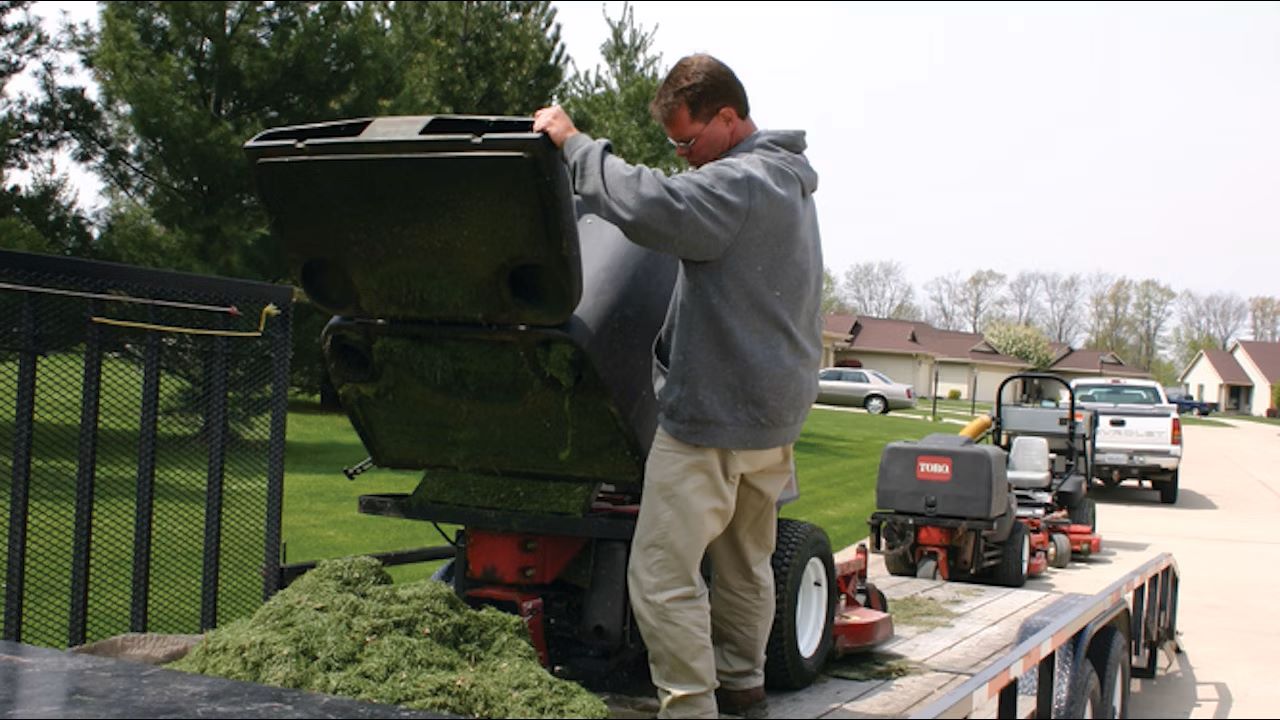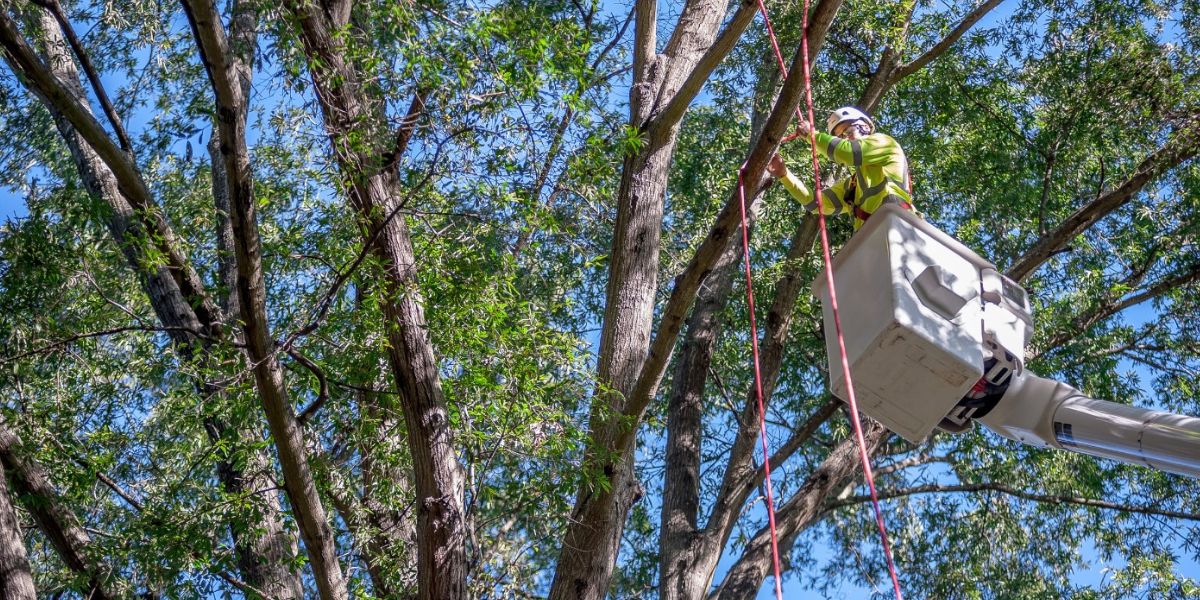Home>Garden Design>Planning Your Garden>How Much Does Monthly Landscaping Cost


Planning Your Garden
How Much Does Monthly Landscaping Cost
Modified: January 22, 2024
"Discover the average monthly cost of landscaping services and learn essential tips for planning your garden. Start creating your dream outdoor space today!"
(Many of the links in this article redirect to a specific reviewed product. Your purchase of these products through affiliate links helps to generate commission for Chicagolandgardening.com, at no extra cost. Learn more)
Table of Contents
Introduction
Welcome to the world of gardening! Whether you are a seasoned green thumb or a beginner looking to cultivate a beautiful outdoor space, planning your garden is an essential first step. Gardens not only enhance the aesthetic appeal of your home but also provide a peaceful retreat where you can connect with nature and recharge your senses.
While planning your garden can be an exciting endeavor, it’s important to consider various factors to ensure that your garden thrives and brings you joy throughout the year. From understanding your soil composition to selecting the right plants for your climate, there are many elements to consider when designing your garden.
In this comprehensive guide, we will explore the key aspects of planning your garden and provide valuable insights to help you create the garden of your dreams. From choosing the perfect location to considering the needs of your plants, we will cover it all. So, grab your gardening gloves and let’s get started!
One of the first things to consider when planning your garden is the size and layout of your available space. Evaluate the area you have to work with and think about how you envision your garden. Do you prefer a spacious lawn with vibrant flower beds? Or perhaps you want to create a cozy oasis with winding pathways and secluded seating areas. Visualize your ideal garden and use this vision as a guide throughout the planning process.
Next, assess the quality of your soil. A healthy, nutrient-rich soil is essential for the overall success of your garden. Conduct a soil test to determine its pH level and composition. Based on the results, you can make any necessary amendments to ensure optimal growing conditions for your plants.
Consider the climate and weather patterns specific to your region. Different plants have different temperature and moisture requirements, so it’s important to choose plants that are well-suited to your local climate. This will help ensure that your garden thrives and requires minimal maintenance.
Another vital factor to consider is the amount of sunlight your garden receives. Observe the sun exposure throughout the day and take note of any areas that are in shade or receive minimal sunlight. This will help you choose the right plants for each area of your garden, as some plants thrive in full sun while others prefer partial shade.
Furthermore, think about the purpose and functionality of your garden. Are you looking to create a peaceful retreat where you can relax and unwind? Or do you want to grow your own fruits, vegetables, and herbs? Determining the purpose of your garden will influence the layout, plant selection, and additional features you choose to incorporate.
Lastly, establish a budget for your garden project. It’s important to set a realistic budget that takes into account the costs of plants, soil amendments, tools, and any additional features you wish to include. By having a budget in place, you can make informed decisions and avoid any financial strain during the planning and implementation phases of your garden.
Now that we’ve covered the key aspects of planning your garden, it’s time to dive deeper into each of these factors and discover the secrets to creating a flourishing and visually stunning outdoor oasis. So, let’s continue our journey and bring your dream garden to life!
Factors Affecting Monthly Landscaping Costs
When it comes to monthly landscaping costs, several factors can influence the overall expenses. Understanding these factors will help you plan and budget accordingly. Here are the key elements contributing to the variation in landscaping costs:
Size of the Property: The size of your property is a significant factor in determining your monthly landscaping costs. Larger properties will naturally require more time, effort, and resources to maintain. Landscaping crews may need to spend extra hours mowing, pruning, and tending to the garden on a larger property, which can increase the overall costs.
Scope of Work: The scope of the landscaping work required also impacts the monthly costs. If you have a complex landscape design with intricate hardscaping features, multiple flower beds, and custom installations, it will require more time and effort to maintain. On the other hand, a simpler design with minimal landscaping elements will generally be less expensive to upkeep.
Type of Plants: The types of plants and landscaping materials you choose can significantly impact the ongoing maintenance costs. Some plants are more high-maintenance and require regular pruning, fertilizing, or pest control, while others are more self-sufficient. Additionally, exotic or rare plant species may require specialized care, resulting in higher costs.
Climatic Conditions: The climate and environmental conditions in your area can also influence monthly landscaping costs. Regions with extreme weather conditions, such as hot summers or harsh winters, may require additional services like irrigation, snow removal, or frost protection. These extra services can increase the overall expenses.
Seasonal Variations: Landscaping costs can vary throughout the year due to seasonal fluctuations. Some months may require more intensive maintenance, such as spring clean-ups or fall leaf removal, while others may have reduced maintenance needs. Landscaping companies often adjust their pricing based on seasonal demands to reflect the level of work required during different times of the year.
Accessibility: The accessibility of your property can impact the cost of landscaping services. If your garden has limited access or obstacles that hinder the movement of equipment and tools, it may require additional time and effort to complete the tasks. This extra effort can translate into higher landscaping costs.
Additional Services: If you require additional services beyond regular landscaping maintenance, such as tree removal, stump grinding, or installation of landscape lighting, these will add to the overall monthly costs. It’s essential to factor in these additional services when estimating your budget for monthly landscaping expenses.
By understanding these factors that affect monthly landscaping costs, you can better evaluate the expenses involved in maintaining a beautiful garden. It’s important to discuss these factors with your landscaping service provider and obtain a detailed cost breakdown before making any commitments. This way, you can plan and budget accordingly, ensuring that your garden is not only stunning but also sustainable within your financial means.
Average Monthly Landscaping Costs
When it comes to monthly landscaping costs, it’s important to have a general idea of what to expect in terms of expenses. While the exact costs can vary depending on various factors, including the size of the property and the scope of work involved, here is a rough estimate of the average monthly landscaping costs:
Lawn Maintenance: Basic lawn maintenance, including mowing, trimming, and edging, typically ranges from $50 to $100 per visit. For a monthly service, you can expect to pay around $150 to $300 on average.
Plant Care: Regular care for plants, including pruning, fertilizing, and weeding, can vary depending on the number of plants and their specific needs. On average, expect to pay around $20 to $50 per visit for plant care services. Monthly costs can range from $60 to $150.
Irrigation System Maintenance: If you have an irrigation system in your garden, regular maintenance, including inspection, repairs, and adjustment, is essential. The cost for irrigation system maintenance can range from $50 to $100 per visit, with monthly costs averaging around $150 to $300.
Seasonal Clean-ups: Seasonal clean-ups, such as spring and fall clean-ups, involve tasks like debris removal, leaf raking, and bed preparation. Costs for seasonal clean-ups can range from $200 to $500 per visit, depending on the size of the property and the amount of work required.
Hardscape Maintenance: If you have hardscaping features like patios, decks, or pathways, they may require occasional maintenance, such as power washing or resealing. Costs for hardscape maintenance can vary significantly depending on the specific tasks and materials involved.
Additional Services: Any additional services you request, such as tree trimming, pest control, or installing landscape lighting, will add to the monthly landscaping costs. The price of these additional services will depend on the nature of the service and the extent of the work required.
Keep in mind that these estimates are just a general guideline, and the actual costs can vary based on your location and the specific factors mentioned earlier. It’s always recommended to obtain quotes from reputable landscaping companies and discuss your budget and expectations before committing to any services.
Additionally, it’s worth considering the benefits of a comprehensive maintenance plan. Some landscaping companies offer monthly or annual maintenance packages that include a range of services at a discounted rate. These plans can provide cost savings and ensure that all aspects of your garden are properly maintained throughout the year.
By understanding the average monthly landscaping costs and exploring your options, you can plan your budget effectively and ensure that your garden receives the necessary care and attention it deserves. Investing in regular maintenance will not only keep your garden looking its best but also prevent potential issues and preserve the value of your outdoor space over time.
Additional Costs to Consider
When planning your garden and budgeting for landscaping expenses, it’s important to take into account the additional costs that may arise. These costs go beyond the regular maintenance and can significantly impact your overall expenditure. Here are some additional costs to consider:
Plant Purchases: Depending on the size and complexity of your garden design, you may need to purchase new plants. The cost of plants can vary greatly depending on the species, size, and availability. It’s a good idea to research the cost of the plants you want to incorporate into your garden and factor them into your budget.
Soil Amendments: To ensure healthy growth, you may need to amend your soil with organic matter, compost, or fertilizers. The cost of soil amendments will vary depending on the quality and quantity required. Conducting a soil test beforehand can help determine the specific amendments needed and give you an estimate of the associated costs.
Landscape Design and Consultation: If you’re looking to create a new garden design or redesign an existing one, you may want to enlist the help of a professional landscape designer or consultant. Their expertise can be invaluable in creating a functional and aesthetically pleasing outdoor space. The cost of landscape design services will depend on the complexity of the project and the experience of the designer.
Equipment and Tools: Depending on the level of involvement you desire in maintaining your garden, you may need to invest in various gardening tools and equipment. This can include items such as lawn mowers, trimmers, pruners, shovels, and watering systems. The cost of these tools will vary depending on the brand and quality.
Pest and Weed Control: Keeping pests and weeds at bay is essential for the health and appearance of your garden. The cost of pest control products or professional pest control services will depend on the size and type of infestation. Additionally, weed control options such as herbicides or organic weed-matting should be considered when budgeting for your garden maintenance.
Watering Systems: Depending on your local climate and water restrictions, you may need to invest in a watering system to keep your plants hydrated. This can include drip irrigation systems, sprinklers, or rainwater harvesting systems. The cost of these systems will vary depending on the size of your garden and the level of automation desired.
Outdoor Lighting: If you want to extend the usability and ambiance of your garden into the evening hours, outdoor lighting can be a great addition. This can include pathway lights, spotlights, or string lights. The cost of outdoor lighting will depend on the number of fixtures, the type of lighting, and the complexity of the installation.
Ongoing Maintenance: Beyond the monthly landscaping costs, it’s important to consider ongoing maintenance tasks that may require additional expenses. This can include replacing dead or damaged plants, repairing or replacing garden structures, or any unforeseen issues that may arise over time.
By taking these additional costs into account when planning your garden and budgeting for landscaping expenses, you will have a more accurate estimate of the total investment required. It’s advisable to set aside a contingency budget to account for any unexpected expenses that may arise along the way. By being prepared, you can ensure a smooth and successful garden planning process without any financial surprises.
Ways to Save on Monthly Landscaping Expenses
While maintaining a beautiful and well-kept garden is a worthy investment, there are several ways you can save on monthly landscaping expenses without compromising the overall appearance and health of your outdoor space. Here are some money-saving tips to consider:
Water Wisely: Watering your garden efficiently can help reduce water consumption and lower your utility bills. Consider installing a rainwater harvesting system to collect and reuse rainwater for irrigation. Additionally, utilize drip irrigation systems or soaker hoses to deliver water directly to the plant roots, minimizing water waste.
Choose Native Plants: Selecting native plants that are well-adapted to your climate can help save on maintenance costs. Native plants are often more resistant to pests and diseases and require less water and fertilizer. They are also more likely to thrive in your specific climate, reducing the need for replacements and extra care.
Optimize Plant Placement: Proper placement of plants based on their light and water requirements can help improve their overall health and reduce the need for excessive maintenance. By ensuring that each plant receives the ideal amount of sunlight and water, you can avoid issues like under or overwatering, which can lead to additional costs and plant replacements.
Mulch and Compost: Applying mulch around your plants not only helps conserve moisture but also suppresses weed growth and regulates soil temperature. Use organic materials like wood chips or straw, which break down over time and add nutrients to the soil. Additionally, composting kitchen scraps and yard waste can provide free, nutrient-rich soil amendment for your garden.
Practice Integrated Pest Management: Integrated Pest Management (IPM) is a holistic approach to pest control that minimizes the use of chemical pesticides. Encourage natural predators, such as ladybugs and birds, to control pests, and utilize organic pest control methods like hand-picking or spraying with organic insecticidal soaps. This can reduce the need for expensive and potentially harmful chemical pesticides.
DIY Maintenance: Consider taking on some of the regular maintenance tasks yourself, such as mowing the lawn, pruning, or weeding. By investing in quality gardening tools and acquiring basic gardening skills, you can reduce the frequency of professional maintenance visits and save money in the long run.
Group Plants with Similar Needs: Planting together species that have similar water and sunlight requirements can streamline your watering and maintenance efforts. By grouping plants with similar needs, you can avoid over or underwatering certain plants and allocate resources more efficiently, reducing the overall cost of maintenance.
Compare Quotes and Negotiate: When selecting a landscaping service provider, obtain multiple quotes from different companies and compare their offerings. Don’t be hesitant to negotiate the prices and discuss your budget. Many companies are willing to work with you to find a suitable pricing plan that meets your needs and financial constraints.
Regularly Maintain Equipment: Properly maintaining your gardening tools and equipment can extend their lifespan and save you from frequent replacements. Regularly clean and sharpen blades, lubricate moving parts, and store them in a dry, sheltered area to prevent rust and damage. This will help you avoid unnecessary expenses in purchasing new equipment.
Consider Long-Term Investments: While it may require a larger upfront cost, investing in long-term solutions can save you money in the long run. For example, installing low-maintenance landscaping features like artificial turf or native perennial plants can reduce yearly maintenance costs and eliminate the need for frequent replacements.
Implementing these cost-saving measures can help you reduce your monthly landscaping expenses while still enjoying a beautiful and well-maintained garden. By being mindful of water usage, utilizing smart planting strategies, and seeking out cost-effective solutions, you can create a sustainable and budget-friendly outdoor space that brings you joy for years to come.
Hiring a Professional Landscaping Company vs. DIY Landscaping
When it comes to landscaping your garden, you have two primary options: hiring a professional landscaping company or taking on the project yourself. Both approaches have their advantages and considerations. Here’s a comparison between hiring a professional landscaping company and DIY landscaping:
Expertise and Knowledge: Professional landscaping companies bring extensive knowledge and experience to the table. They have a deep understanding of plant selection, landscape design principles, and maintenance techniques. They can offer professional advice and creative solutions tailored to your specific needs and preferences. On the other hand, DIY landscaping allows you to learn and experiment, which can be a rewarding and educational experience.
Time and Effort: Landscaping projects require a significant investment of time and effort. Hiring a professional landscaping company allows you to delegate the physical labor and save valuable time. They have the necessary manpower and equipment to efficiently complete the tasks. However, DIY landscaping gives you full control of the timeline, allowing you to work at your own pace and prioritize tasks based on your availability.
Budget Considerations: Hiring a professional landscaping company may involve an upfront cost, but it can be a worthwhile investment. They have access to a wide range of resources, including high-quality materials, specialized tools, and professional-grade equipment. They can also help you avoid costly mistakes and provide long-term maintenance plans. DIY landscaping, on the other hand, allows you to save on labor costs but requires careful budget planning and research to ensure you have the necessary resources within your financial means.
Quality and Results: Professional landscaping companies have the expertise and experience to deliver high-quality results. They can create a cohesive and aesthetically pleasing design that suits your preferences and complements your outdoor space. They also have a deep understanding of proper installation techniques and maintenance practices. DIY landscaping may offer you a sense of personal accomplishment, but achieving professional-level results may require a steep learning curve and trial-and-error.
Maintenance and Support: Professional landscaping companies often offer ongoing maintenance services to ensure the longevity of your garden. They have the knowledge and tools to address any issues that may arise and keep your garden in optimum condition. DIY landscaping requires you to take on the responsibility of regular maintenance and may involve additional costs for necessary tools, equipment, and learning resources.
Safety and Insurance: Hiring a professional landscaping company provides peace of mind when it comes to safety and insurance. They are trained in handling potentially hazardous tasks and have liability insurance to protect you from any accidents or damages. DIY landscaping requires you to take the necessary safety precautions and may expose you to potential risks if proper procedures are not followed.
Ultimately, the decision between hiring a professional landscaping company or pursuing DIY landscaping comes down to your specific situation, budget, and personal preferences. Before making a decision, carefully evaluate your goals, the complexity of the project, your available time, resources, and budget. Consider consulting with professional landscapers to get an understanding of the scope of work and associated costs. Whether you choose to hire professionals or take on the project yourself, the most important aspect is creating a garden that brings you joy and fits your lifestyle.
Conclusion
Planning your garden is an exciting and fulfilling process that allows you to create a beautiful and vibrant outdoor space. By considering various factors such as the size and layout of your property, soil composition, climate, and the purpose of your garden, you can design a space that meets your needs and brings you joy.
Understanding the factors that impact monthly landscaping costs, such as the size of your property, scope of work, type of plants, and climatic conditions, helps you budget effectively and make informed decisions. Additionally, considering the additional costs involved, such as plant purchases, soil amendments, and specialized services, allows for a more accurate estimation of the total investment required.
There are also several ways to save on monthly landscaping expenses, such as water-wise practices, choosing native plants, DIY maintenance, and optimizing plant placement. These cost-saving measures help you achieve a sustainable and budget-friendly garden without compromising its beauty and health.
When deciding between hiring a professional landscaping company or opting for DIY landscaping, carefully evaluate your expertise, time availability, budget, and desired level of quality. Professional landscapers bring expertise, time-saving efficiency, and high-quality results, while DIY landscaping offers a personal touch, learning experience, and potential cost savings.
Ultimately, the goal of planning your garden is to create a space that brings you joy, enhances the beauty of your home, and provides a haven for relaxation and connection with nature. Whether you decide to seek professional assistance or embark on the journey yourself, the key is to enjoy the process and create a garden that reflects your vision and personality.
So gather your gardening tools, unleash your creativity, and let your garden flourish into a stunning oasis that you can cherish for years to come.

